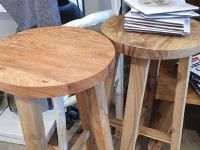Rhubarb
A 5 minute read by Peter Worsp
Planting
-
Select a site that is well-drained, fertile and preferably in full sunlight.
-
Dig large holes. Space rhubarb plants about 1m apart and plant the roots 3-5cm below the surface of the soil.
-
Be sure to mix compost, rotted manure, or anything high in organic matter in the soil. Rhubarb plants are heavy feeders and need this organic matter.
Care
-
Mulch generously with a heavy layer of straw and manure (like Tui Sheep Pellets) to provide nutrients for the plant, retain moisture and discourage weeds.
-
Water your plant well. It needs lots of water during the summer.
-
Remove flower stalks as soon as they appear.
-
At the start of spring, apply a light sprinkling of Nitrophoska when the ground is thawing in order for the fertiliser to get into the ground and not harm the roots.
-
Insects and diseases won't bother rhubarb plants as long as you keep the plants weed-free.
-
Dig and Split rhubarb roots every 3 to 4 years. Divide when plants are dormant in early spring (or Autumn).
Harvest/storage
-
Do not harvest any stalks during the first growing season to allow your plant to become established.
-
Harvest the stalks when they are 30-40cms long. If the stalks become thin, stop harvesting; this means the plants food reserves are low.
-
Grab the base of the stalk and pull it away from the plant with a gentle twist. The leaves are poisonous, throw them away or they can be used as a natural insecticide.
-
Always leave at least two stalks per plant to ensure continued production.
-
After harvest time, the stems may die back. Just remove all plant debris. Once your ground freezes, it's best to cover rhubarb with 3-5cm of mulch, preferably well-rotted compost; by adding nitrogen to the soil, you're preparing the rhubarb plants for a good spring season.




